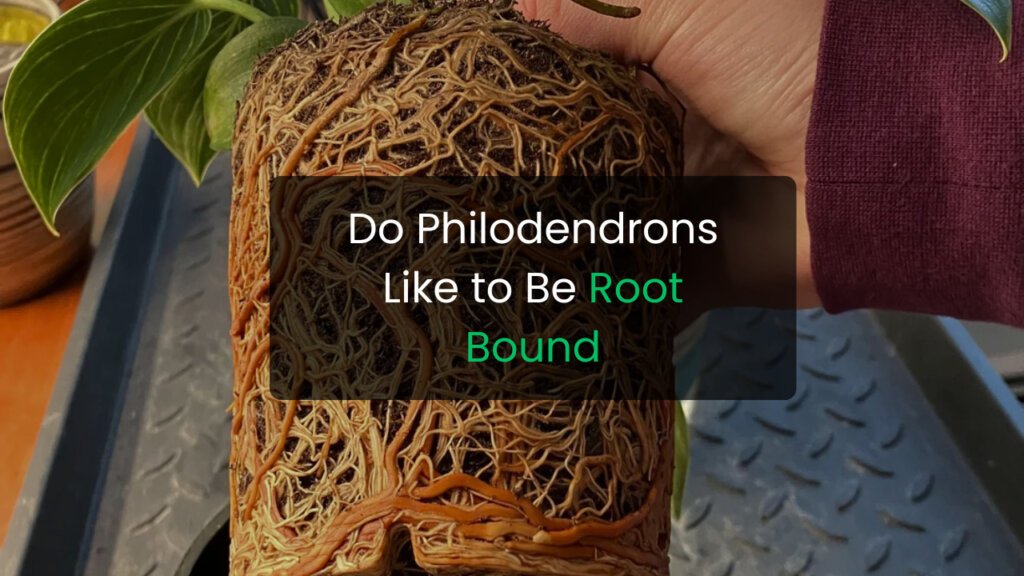Philodendrons are popular tropical houseplants known for their easy care, hardy growth, and beautiful leaves. Many plant lovers wonder if philodendrons enjoy being root bound or if they need frequent repotting to stay healthy. While philodendrons can tolerate slightly tight roots for a short time, they do not truly like being root bound.
Letting a philodendron stay root bound for too long can slow its growth, cause yellow leaves, and reduce water and nutrient absorption. For strong and healthy growth, it is best to repot philodendrons at the right time.
Do Philodendrons Prefer Tight Pots
Philodendrons grow well when their roots have space to spread. A snug pot for a short period can boost growth, but a completely root bound plant becomes stressed. These tropical plants need room for root expansion to grow new leaves and maintain good soil aeration and drainage.
If you see roots circling the pot or growing out of drainage holes, it is a sign your philodendron is becoming root bound and needs attention.
Signs Your Philodendron Is Root Bound
Look for these signs to know if your philodendron needs repotting
- Roots coming out from the bottom of the pot
- Soil drying very quickly after watering
- Slower growth or small new leaves
- Yellowing leaves
- Root ball tightly packed when removed from pot
When to Repot a Philodendron
Philodendrons usually need repotting every one to two years. The best time to repot is during spring or early summer, when the plant is in active growth. Choose a pot one to two inches larger than the current one to avoid planting in a pot that is too big, which can cause overwatering issues.
Best Soil and Pot for Philodendrons
Philodendrons thrive in loose, well draining soil. A mix designed for aroids or a combination of potting soil, perlite, and orchid bark works well. Make sure the pot has drainage holes to prevent root rot.
This helps maintain moisture balance and promotes healthy root development for indoor plant care.
Final Thoughts
Philodendrons do not like to stay root bound for long. While they can handle slightly tight roots, giving them proper space supports strong growth, larger leaves, and overall plant health. Checking your plant regularly and repotting when needed is key to growing a happy philodendron.
FAQs
Do philodendrons grow better when slightly root bound
They may grow well for a short time, but staying root bound too long leads to stress and poor growth.
How often should I repot a philodendron
Every one to two years depending on growth and pot size.
What happens if I do not repot a root bound philodendron
The plant may stop growing, show yellow leaves, and struggle to absorb water and nutrients.
What size pot is best for philodendrons
Choose a pot one or two inches bigger than the current one.
Can repotting shock my philodendron
Some stress is normal, but gentle handling and fresh soil help the plant recover quickly.





